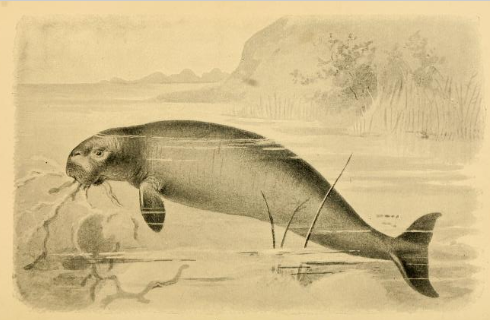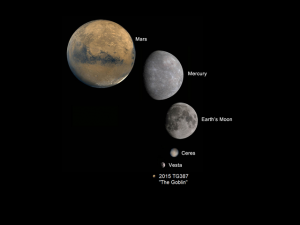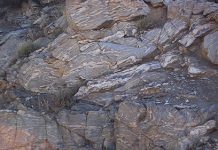
By Jim Brace Thompson
A Long Journey Home for an Ancient Sea Cow
Its bones were first spotted back in 2012 by a geologist mapping fault lines. But only now, six years later, has it been excavated, crated, and transported by helicopter, boat, and truck. No matter the delay. The extinct sea cow discovered in a remote ravine on Santa Rosa Island off the coast of Ventura, California, had been waiting patiently some 20 to 25 million years to be found!
Now housed at the Santa Barbara Museum of Natural History, it may prove to be the oldest sea cow ever discovered in southern California. As scientists painstakingly prep out the skull from rocky matrix, they hope it also may prove to be a whole new species and might help in the quest determine why sirenians, which once numbered more than a dozen species around the world, dwindled to just the manatees and dugongs currently living in restricted parts of our planet Earth.
New Dwarf Planet Intensifies Debate
A few years back, our solar system shrunk a bit as our ninth planet Pluto was demoted to mere “dwarf planet” status, no long in league with Mercury, Venus, Mars, Jupiter, Saturn, Uranus, Neptune and our own planet Earth. Well, it seems we may be growing once again to a league of nine.

On October 2, astronomers announced the discovery of another dwarf planet, 2015 TG387, more popularly known as “The Goblin”. The Goblin is located billions of miles beyond fellow dwarf planet Pluto and 7.9 billion miles from the sun.
It takes a full 40,000 Earth years for The Goblin to complete a single loop around the sun. What’s more, The Goblin apparently has a very strange elongated and highly inclined orbit which hints it may be influenced by the gravitational pull of something else: a new ninth planet with a mass ten times that of Earth!
Sometimes called “Planet Nine” and sometimes “Planet X”, its existence has long been speculated and debated. Scott Sheppard of the Carnegie Institution for Science, who worked with other astronomers in making and announcing the recent discovery of The Goblin, says, “These distant objects are like breadcrumbs leading us to Planet X.”
Using Artificial Intelligence for Aftershock Forecasting
Per a study published August 30, 2018, in the journal Nature, Harvard researchers (along with Google) have crafted an artificial intelligence system that can forecast patterns and locations of aftershocks from major earthquakes.
They gathered data from 131,000 pairs of earthquakes and aftershocks all around the world and fed the database into complex algorithms. The results of their “machine learning approach” were significantly better than previous approaches for predicting just where and when aftershocks may occur.
It is hoped this research will improve the iffy but important art of aftershock forecasting.
Author: Jim Brace-Thompson
 Founder and overseer of the AFMS Badge Program for kids.
Founder and overseer of the AFMS Badge Program for kids.
He’s also an inductee of the National Rockhound & Lapidary Hall of Fame within the Education Category.















